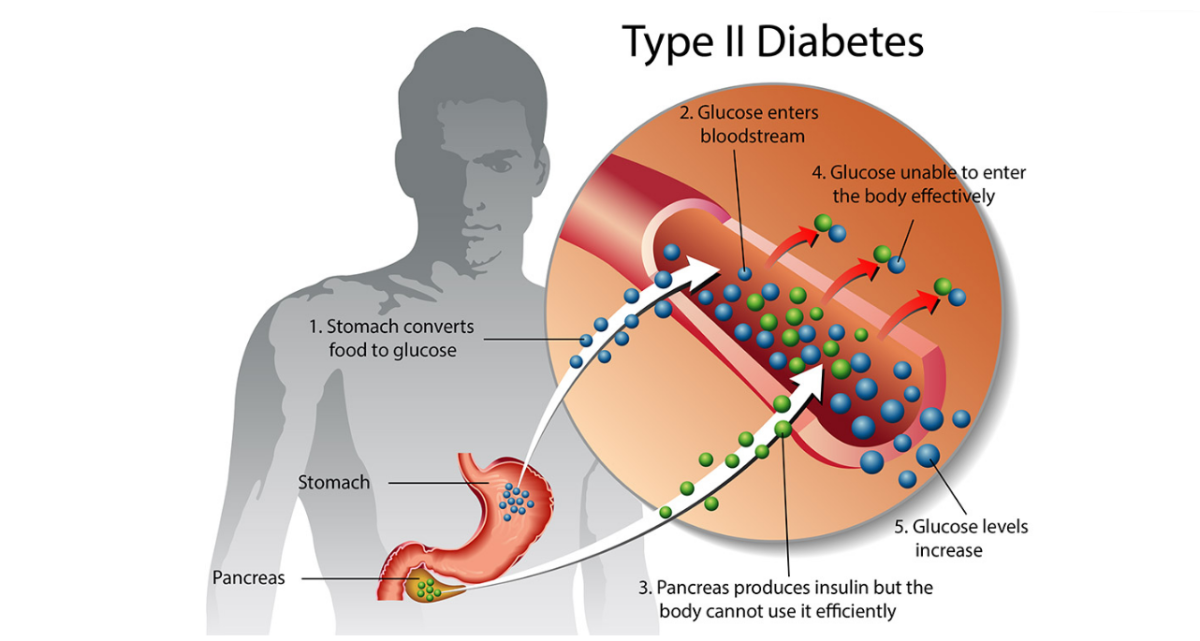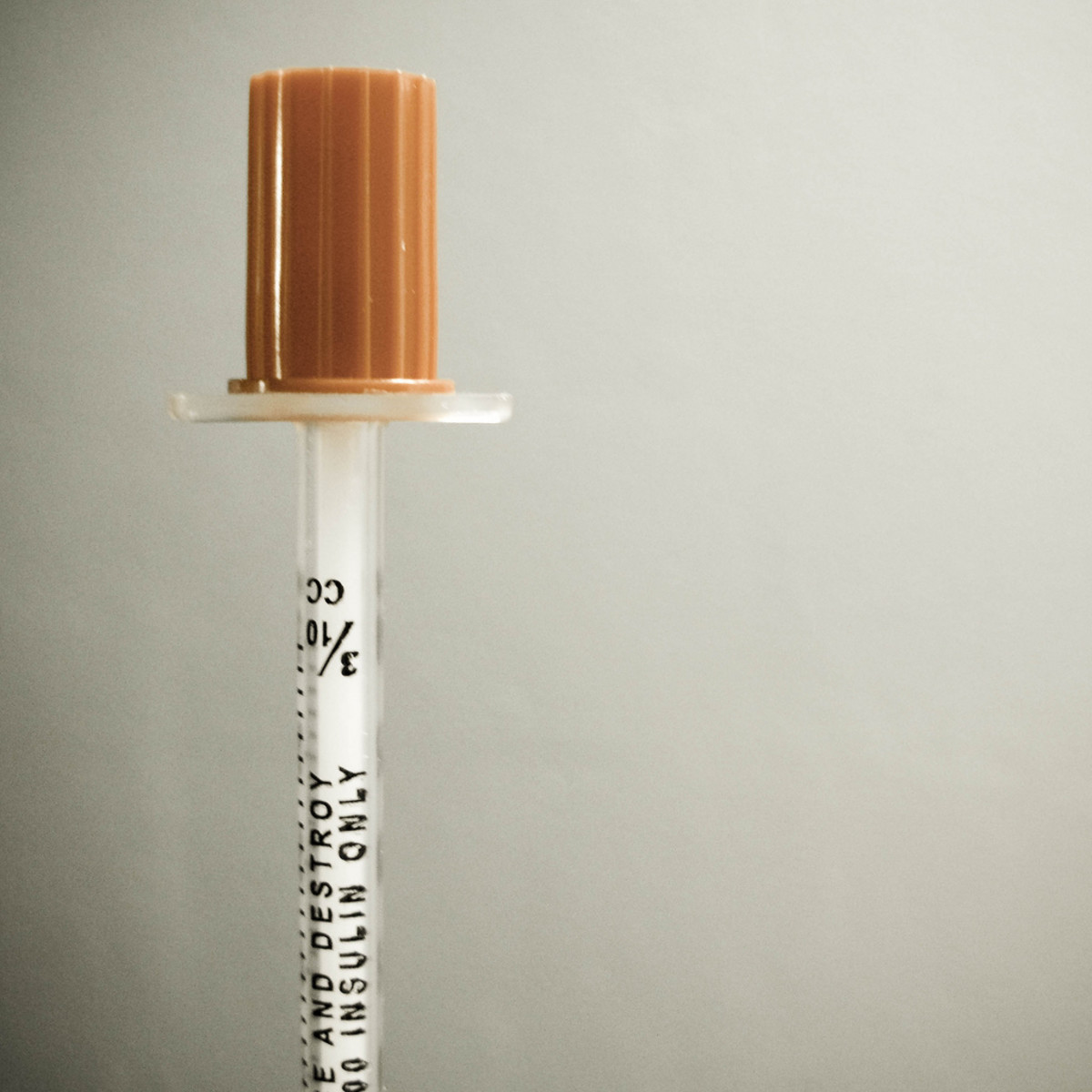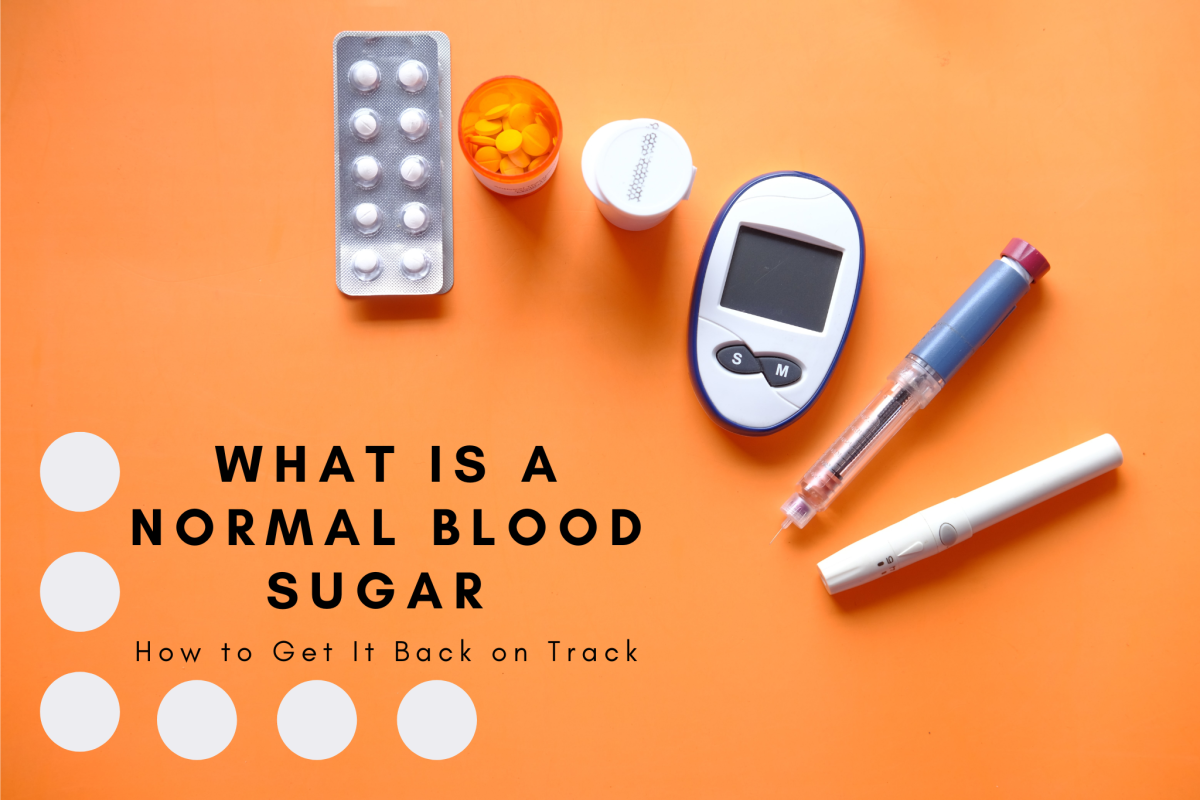Diabetes Mellitus and Insipidus
Diabetes Mellitus and Insipidus
Diabetes Mellitus
Diabetes Mellitus is a serious disease due to insufficient production of a secretion of the pancreas known as insulin. This substance is capable of burning (oxidizing) glucose, a form of sugar which the blood carries throughout the body to produce heat and energy, particularly in the muscles. Since glucose (which is formed during digestion, mainly from starch found in potatoes, bread, and cereals), supplies about three-fifths of the body's food requirements, it can readily be seen how disastrous to health a partial inability to utilize this form of food can be.

What Insulin Is
Insulin is secreted by little "islands" of cells in the pancreas. These usually degenerate in diabetes until they are no longer able to function efficiently in the production of insulin, which is needed in the "burning" or oxidizing of simple sugars and in the synthesis and storage of glycogen in the liver and muscle particularly. The real cause of this degeneration is unknown.
Overweight a Factor
Overweight or obesity seems to predispose to the disease; a significant percentage of those suffering from this problem are overweight. In controlling the weight, the reduction of starches and sugars in the diet is helpful as a general health measure, though as a preventive of diabetes it is no doubt limited. A more logical explanation of the association of marked obesity with diabetes is that both are brought about in some corresponding degree by a profound change in the chemistry of the body, probably from a disturbance of some gland of internal secretion. Sometimes heredity is the principal factor, the disease being present in one or both parents. Diabetes occasionally follows severe shock or infection.
Prevention
For those who are very much overweight and particularly if there is a history of diabetes in the family, dieting to keep the weight down to normal, by the reduction of sugar and starches in the diet, is probably of value. The value resulting from such a regimen is derived no doubt from an improvement in the general health, and therefore to the body metabolism. It is important for those suffering from obesity to have the urine examined yearly to discover the beginning of diabetes and accordingly institute treatment in the early stages of the disease.
Symptoms
The disease usually develops so slowly that no symptoms are noticed for months or even years; and even then it may be discovered only by some routine examination. The most typical complaints are: increase in the amount of urine, varying in twenty-four hours from two to six quarts; considerable thirst, caused probably by the increased amount of sugar in the blood extracting water from the tissues; and weakness and loss of weight. There may be general itching of the skin, or the itching may be localized about the genital organs, due to irritation of the sugar-laden urine. These symptoms are present only after diabetes is moderately advanced.
Examination of the Urine
Laboratory examinations of the urine and blood will help to establish a definite diagnosis. The urine contains in diabetes from a fraction of one per cent of sugar to eight or ten per cent of sugar or glucose, and, in severe cases, substances known as ketone bodies. The blood contains from about 150 to 800 milligrams of glucose in each 100 cubic centimeters, whereas the normal amount is 80 to 120 milligrams for the same amount of blood.
Danger of Acidosis
A complication of the severe cases of diabetes is acute acidosis, which is always to be carefully and continuously guarded against. This condition results when the alkaline salts of the blood have combined with an unusual amount of acids until the reserve of salts has been reduced to a dangerously low level. Even so, the blood itself never becomes acid, as this is incompatible with life itself. The excessive formation of acids in diabetes results from the incomplete oxidation or "burning" of the fats. The reason for the poor utilization of the fats is that fats "burn" well only when there is rapid oxidation of sugars at the same time. Of course, this oxidation or "burning" of sugar or glucose depends upon the pancreas liberating a sufficient amount of insulin; and when the secretion is deficient, as it is in diabetes, then the sugars as well as the fats are not burned well, and the result is acidosis.
Symptoms of Severe Acidosis
The symptoms produced by acidosis (a lowering of the reserve of alkaline salts) are drowsiness, nausea, vomiting, pain in the stomach, deep breathing, soft eyeballs, a low temperature, and finally unconsciousness and death, unless the complication of acidosis is promptly and properly treated. Fevers, surgery, or an incorrect diet can cause acidosis, especially in fairly severe cases of diabetes, unless insulin treatment is given at the proper time. Other less frequent complications are the development of ulcers of the feet, and crops of boils.
Outlook Bright
Before the discovery of insulin the outlook in severe cases was gloomy. Now with proper dietetic treatment and with the use of insulin, when the latter is indicated, one may live about as long as if he did not have the disease.
Diabetes Is Not a Disease of the Kidneys
There is a very common belief that diabetes is a disease of the kidneys because there is sugar in the urine and the diagnosis is made through its examination. This is an erroneous idea, though sometimes kidney disease may complicate diabetes. The continued presence of sugar in the urine is proof only that the kidneys are trying to eliminate the excess sugar in the blood, just as they would attempt to eliminate an excess of any other substance.
Treatment
A physician should be in charge of any case of diabetes, and his instructions conscientiously followed. The treatment given below is intended as a general guide but does not take the place of the physician's advice, as each particular case needs individual direction.
Keep the Urine Sugar-free
The fundamental point in the treatment of diabetes is to keep the urine sugar-free, not that the sugar is injurious in itself, but sugar-free urine is usually proof that the body is holding its own against the disease and that the blood does not contain more than its normal amount of sugar, which is eighty to one hundred and twenty milligrams in each one hundred cubic centimeters of blood.
The Use of Insulin
If a continual reduction of the starch and sugar containing foods results in a decrease in weight and strength, and the presence of sugar in the urine still persists, then it is time to call in the aid of — the life-saving insulin. This, however, is not curative but must be taken during the rest of one's life. It merely supplies the body with the secretion normally supplied by the pancreas, but which in diabetes is deficient. The patient can be allowed a more liberal diet along with the insulin treatment, as this added amount of the secretion enables him to utilize greater amounts of starches and sugars, and thus keep up his normal weight and strength. If both treatments are carried on wisely and persistently the affected individual may expect to live out his normal span of life.
Dangers of an Overdose
No patient should attempt to treat himself with insulin except by the careful directions given him by his physician, for an overdose of insulin results in serious symptoms, and even death. The overdose oxidizes so much sugar in the blood that the sugar falls below the normal requirement, without which the body cannot function normally. The symptoms of over dosage are weakness, mental confusion, sweating, restlessness, a hollow or sinking feeling in the stomach, and in severe cases, convulsions and eventual unconsciousness. Insulin, if used correctly, gives rise to no alarming or distressing symptoms; but, since over-dosage is possible, it is always well to carry pieces of sugar or of candy, or some other concentrated sweet food along with one, so that if any symptoms of an overdose of the injection appear they can be promptly allayed by eating the sugar or other sweet. In severe cases a physician should be called. The sugar is merely "burned up," by the insulin which of course reduces the excess of insulin injected.
Diabetes Insipidus
Prevention
There is no way of preventing this disease nor of determining beforehand who will be afflicted by it.
Symptoms
The onset can be gradual, but it can be caused by damage to the pituitary gland or hypothalamus, a severe injury to the head, or some infectious disease. The symptom most characterizing this disease is the voiding of great quantities of urine, varying from eight to fourteen quarts daily, and in rare instances to as much as forty-five quarts. The thirst of course is correspondingly great, because of the great amount of water required to replace that which is constantly being given off. Because of the great quantity, the urine becomes almost colorless and has a very low specific gravity (weight) but otherwise contains no abnormal substances, such as sugar or albumin. It is not at all related to ordinary diabetes, but is called diabetes because the word means to go through, referring, to the great quantities of water passing through the kidneys and being discharged as urine.








